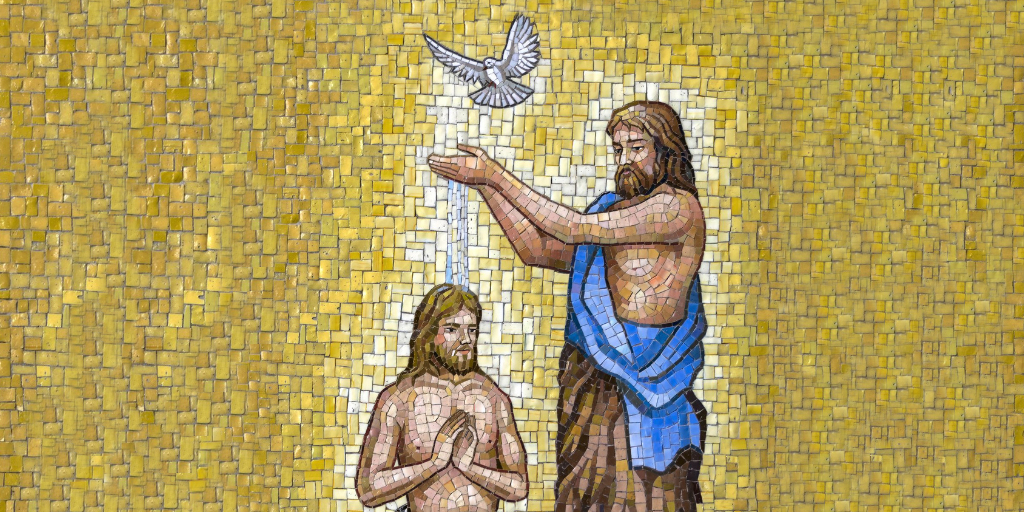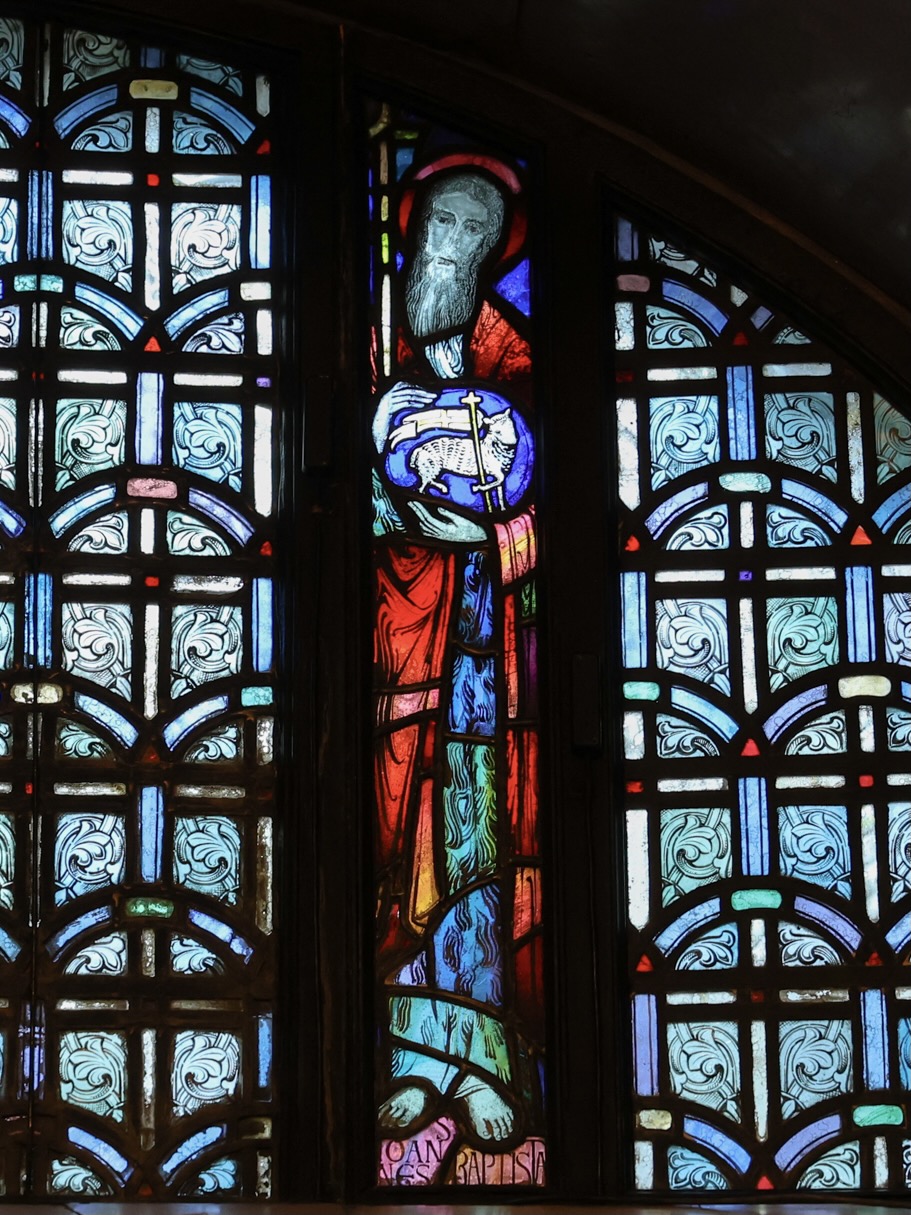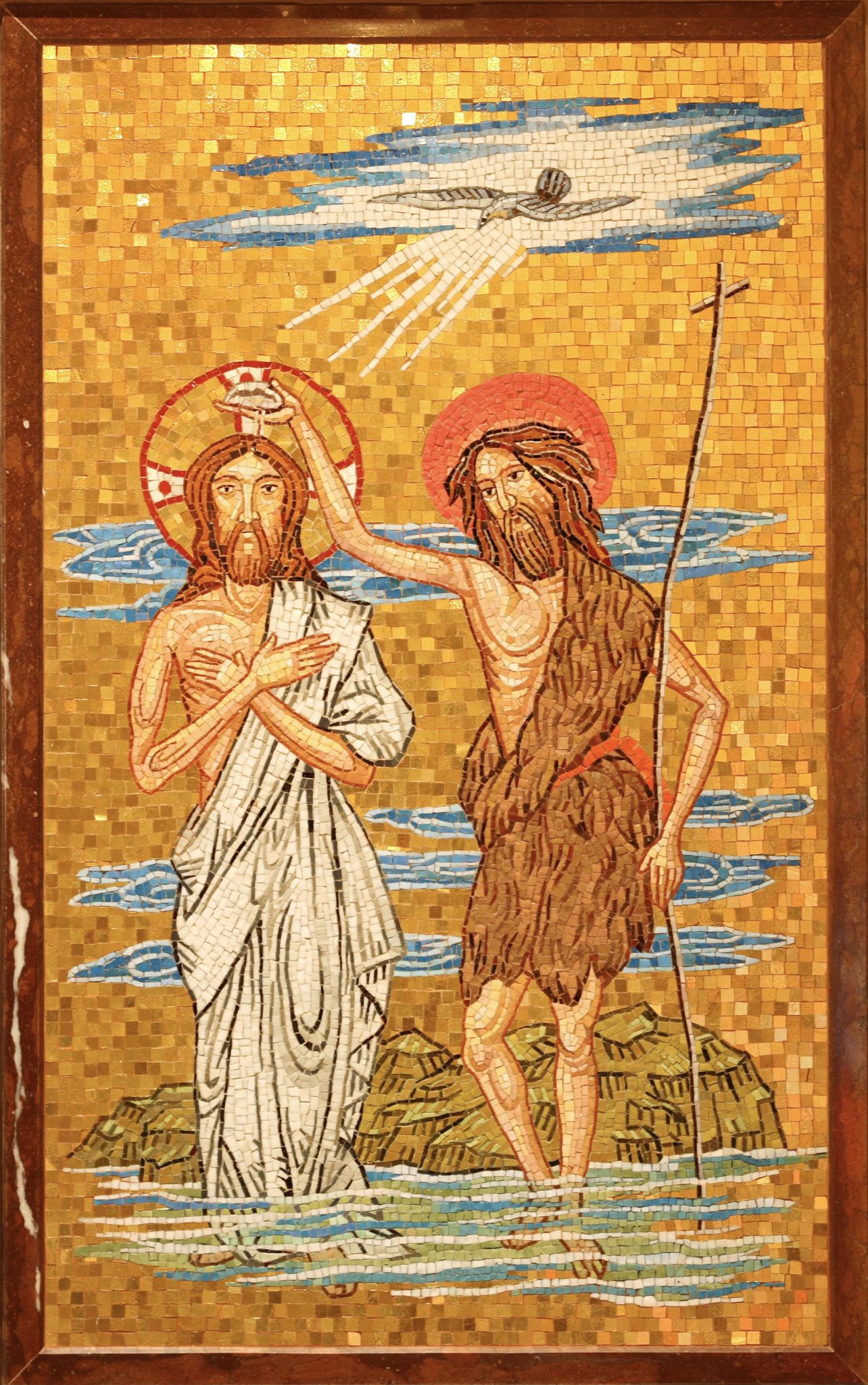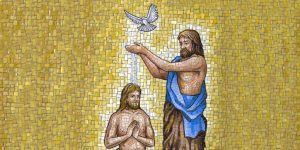
To the modern reader, St. John the Baptist’s beginnings may sound unusual; he grew up and lived as a hermit in the Judean wilderness, wore camel hair clothing, and subsisted on a diet of wild honey and locusts. That this man of the desert should play a key role in Jesus’ ministry may seem surprising, but God had appointed him centuries earlier, as Isaiah 40:3 indicates:
“A voice proclaims: In the wilderness prepare the way of the Lord! Make straight in the wasteland a highway for our God!”
Not only did John baptize Jesus, marking the inauguration of His ministry, but John went on to preach and baptize countless others, exhorting them to abandon their selfish ways.
This week, as we celebrate the Solemnity of the Nativity of St. John the Baptist on June 24, we invite you to discover three art pieces where he is portrayed at the Basilica and reflect on his life and legacy.
 1. The St. Anastasia Chapel Lunette Window
1. The St. Anastasia Chapel Lunette Window
In the Crypt Church, John is featured in a stained-glass lunette window above the St. Anastasia Chapel. This window is one of a series of lunette windows in the West Apse focusing on the theme of “the Prophecy,” highlighting significant Biblical figures and prophets related to the glorification of Mary in the birth of Jesus. Here, John is portrayed alongside the prophet Elias in hues of blue, purple, and red, and is depicted holding a sheep.
John’s role was prophesied in the Old Testament, not only in Isaiah 40:3, but in Malachi 3:1, as the one who “prepares the way of the Lord.” Similar language is used to describe him in Mark 1:1-5, Luke 3:4 and 7:27, and Matthew 3:3 makes clear that John was the man foretold in the prophecy.
2. The Rosary Walk and Garden
In the Rosary Walk and Garden, you can find a vivid mosaic depiction of John’s baptism of Jesus, as described in Mark 1:9-11:
“It happened in those days that Jesus came from Nazareth of Galilee and was baptized in the Jordan by John. On coming up out of the water he saw the heavens being torn open and the Spirit, like a dove, descending upon him. And a voice came from the heavens, ‘You are my beloved Son; with you I am well pleased.’”
Balancing cool and warm tones, this portrayal is featured alongside mosaics of the other Luminous Mysteries designed by David Gavasheli and created by Artistic Mosaics by Travisanutto of Spilimbergo, Italy.
 3. The Our Lady of Pompei Chapel
3. The Our Lady of Pompei Chapel
Just as in the Rosary Garden, in the Our Lady of Pompei Chapel, you can find John’s baptism of Jesus portrayed in mosaic along with the other Luminous Mysteries. Created by Leandro Miguel Velasco of Rambusch Decorating Co., this mosaic is pervaded by warm tones, featuring a gold-colored backdrop. John is depicted in camel-hair clothing, his humble appearance contrasting with the brilliant white robes of Jesus, whose holiness is reflected not only in his clothes, but by the aureole around His head. At their feet are the blue waters of the Jordan River, while the Holy Spirit is depicted as a dove over their heads.
As we celebrate this feast day, let us take a moment to remember John the Baptist’s life of selflessness and strive to imitate the example he set for us when he proclaimed: “He must increase; I must decrease,” (John 3:30).
Source:
Rohling, Geraldine M., PhD, MAEd. The Basilica of the National Shrine of the Immaculate Conception: Guide and Tour Book. Washington, D.C.: Basilica of the National Shrine of the Immaculate Conception, 2018.



